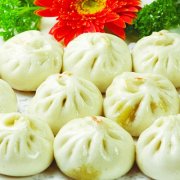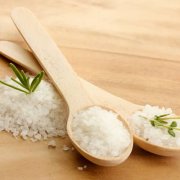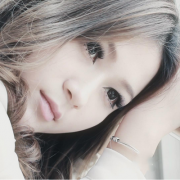Recommended Boutique ---Kun Ning Palace collection · Calligraphy and painting
坤宁宫,位于乾清宫、交泰殿之后,是内廷后三宫的最后一座宫殿,始建成于明永乐十八年(1420年)。坤宁宫面阔9间(东、西尽间是夹道),进深3间,黄琉璃瓦重檐庑殿顶。坤宁宫是北京故宫内廷后三宫之一。《周易》中有卦名“坤”,所谓“地势坤,君子以厚德载物”。《道德经》第三十九章:“天得一以清,地得一以宁。“坤宁”意为“坤地宁定”。
Kun Ning Palace, located after the Qianqing Palace and the Jiaotai Hall, is the last palace of the three palaces of the Inner Court. It was built in the 18th year of Yongle of the Ming Dynasty (1420). The Kun Ning Palace is 9 rooms wide (east and west are sandwiched between), 3 rooms deep, yellow glazed tiles double eaves hipped roof. The Palace of Earthly Tranquility is one of the three inner palaces of the Palace Museum in Beijing. "Zhouyi" in the name of the hexagrams "Kun", the so-called "terrain kun, a gentleman with moral". Tao Te Ching, Chapter 39: "Heaven is one with clarity, and earth is one with peace." "Kun Ning" means "Kun dinidine".

近期我公司征集了一件“坤宁宫藏·书画”,精致的木盒上贴着“内务府封”的封条,内里保存着书画一幅。整件藏品保存完好,封条完好,未被拆封过,木盒呈红褐颜色,古朴大气。木盒的上方被封条封住的一面上刻有“书”、“画”以及“坤宁宫藏”几个字,尽显神秘之感。
Recently, our company collected a piece of "Kun Ning Palace Collection · Calligraphy and painting". The exquisite wooden box is affixed with the seal of "Internal Affairs House Seal", and a piece of calligraphy and painting is preserved inside. The whole collection is well preserved, the seal is intact, has not been unsealed, the wooden box is red-brown color, simple and atmospheric. The sealed side above the wooden box is engraved with the words "book", "painting" and "Kun Ning Palace Collection", showing a sense of mystery.
坤宁宫始建于明朝永乐十八年(1420年),正德九年(1514年)、万历二十四年(1596年)先后两次毁于火灾,万历三十三年(1605年)重建。清朝顺治元年(1645年)重修,顺治二年五月建成乾清宫殿区,并无坤宁宫,其位置为乾清宫后长房25间,总长27丈5尺,每间约宽3.48米。顺治十二年(1655年)仿盛京清宁宫再度重修。嘉庆二年(1797年)乾清宫失火,延烧坤宁宫前檐,嘉庆三年(1798年)重修。坤宁宫明朝是皇后的寝宫(即“中宫”)。1644年李自成率农民起义军攻进北京时,明朝崇祯帝的皇后(周皇后)便在坤宁宫自杀。清朝顺治十二年(1655年)仿照清宁宫改建以后,即变成清朝宫廷萨满祭祀的主要场所,但是其“中宫”的地位未改变。清朝康熙四年(1665年)康熙帝大婚时,太皇太后指定大婚在坤宁宫行合卺礼。同治帝、光绪帝大婚,溥仪结婚,也均在坤宁宫举行。这四位皇帝大婚时,均先和皇后在坤宁宫居住二日,再迁居乾清宫或养心殿。雍正以后,皇帝移住养心殿,皇后也不再居住在坤宁宫,而是择东六宫、西六宫之一居住,坤宁宫实际已成为专供萨满祭祀的场所。
The palace was built in the 18th year of Yongle in the Ming Dynasty (1420), the ninth year of Zhengde (1514) and the 24th year of Wanli (1596), and was destroyed by fire twice, and rebuilt in the 33rd year of Wanli (1605). Qing Dynasty Shunzhi first year (1645) rebuilt, Shunzhi two May built the Qianqing palace area, there is no Kun ning palace, its position is the Qianqing Palace after the long room 25, the length of 27 feet 5 feet, each about 3.48 meters wide. In the twelfth year of Shunzhi (1655), the palace was rebuilt again. In the second year of Jiaqing (1797), the Qianqing Palace caught fire and burned the front eaves of the Kun Ning Palace, which was rebuilt in the third year of Jiaqing (1798). Palace of Earthly Tranquility in the Ming Dynasty was the sleeping palace of the empress (the "Middle palace"). In 1644, when Li Zicheng led a peasant rebellion into Beijing, the Empress of Emperor Chongzhen of the Ming Dynasty (Empress Zhou) committed suicide in the Palace of Kun Ning. In the 12th year of Shunzhi (1655) of Qing Dynasty, it became the main place for shamanic worship in the Qing court, but its status as "middle palace" did not change. When Emperor Kangxi got married in the fourth year of Kangxi's reign (1665), the Empress Dowager designated the wedding ceremony at the Palace of Kun Ning. Tongzhi Emperor, Guangxu Emperor wedding, Puyi marriage, are also held in the palace of Kun Ning. When these four emperors got married, they all lived with the empress for two days in the Palace of Earthly Tranquility, and then moved to the Palace of Dry Qing or the Hall of Mental Cultivation. After Yongzheng, the emperor moved to the Hall of mental cultivation, and the empress no longer lived in the Palace of Earthly Tranquility, but chose one of the six east and six west palaces to live, and the palace of Earthly Tranquility actually became a place for shaman sacrifice.

清朝在坤宁宫里居住的皇后很少,根据《大清会典》可肯定皇后曾在坤宁宫居住过的,只有康熙、同治、光绪三朝,其中同治、光绪两朝均为大婚时居住二日,只有康熙朝的皇后是以坤宁宫为真正的寝宫。康熙朝的孝诚仁皇后和孝昭仁皇后皆崩于坤宁宫。另外还有辛亥革命以后溥仪举行婚礼时也同皇后在此居住过二日。除举行皇帝大婚之外,清朝历朝皇后在元旦、冬至、皇后的生日(称为“千秋”),率贵妃等朝见太后及皇帝礼毕,在坤宁宫休息,再至交泰殿升座,受妃嫔们朝贺。清朝坤宁宫的经常性用途为萨满教祭神。每日朝夕祭、春秋大祭、求福祭、十二月二十三日祭灶等等,均在坤宁宫的明间举行。1959年起,坤宁宫内布置为原状陈列。这一宫廷生活原状陈列延续至今。
Few queens lived in the Palace of Earthly Tranquility in the Qing Dynasty. According to the "Grand Qing Convention", it can be confirmed that the queen had lived in the Palace of Earthly Tranquility, only Kangxi, Tongzhi and Guangxu three dynasties, among which Tongzhi and Guangxu lived for two days when they were married, and only the queens of Kangxi Dynasty used the Palace of Earthly Tranquility as their real sleeping palace. Empress Xiaochengren and Empress Xiaozhaoren of the Kangxi Dynasty both died in the Palace of Earthly Tranquility. In addition, after the revolution of 1911, Puyi held a wedding ceremony with the queen in this residence for two days. In addition to the emperor's big marriage, the Qing Dynasty empress in the New Year's Day, winter solstice, the queen's birthday (known as "thousand autumn"), the rate of royal concubine and other court to see the Queen Mother and the emperor, rest in the palace of Kun Ning, and then to the temple of Thailand, by the concubines to congratulate.The regular use of the palace of Kun Ning in the Qing Dynasty was shamanism. The daily morning and evening offerings, the Spring and Autumn major offerings, the blessing offerings, the December 23 offerings, etc., are held in the Ming room of the Palace of Earthly Tranquility. Since 1959, the palace has been decorated as the original display. This undisturbed display of court life continues to this day.
而内务府是清代独有的机构,职官多达三千人,比事务最繁的户部人数多十倍以上,可以说是清朝规模最大的机关。内务府主要职能是管理皇家事务,诸如皇家日膳、服饰、库贮、礼仪、工程、农庄、畜牧、警卫扈从、山泽采捕等,还把持盐政、分收榷关、收受贡品。大清国内务府造办处会生产一些封字画,作为官方礼物或宝物,此藏品根据历史背景应是内务府造办处所封字画。内务府的组织渊源于满族社会的包衣(奴仆)制度,其主要人员分别由满洲八旗中的上三旗(即镶黄、正黄、正白旗)所属包衣组成。最高长官为总管内务府大臣,初为三品衙门,雍正十三年(1735)升为正二品,由皇帝从满洲王公、内大臣、尚书、侍郎中特简,或从满洲侍卫、本府郎中、三院卿中升补。凡皇帝家的衣、食、住、行等各种事务,都由内务府承办。内务府主要机构有“七司三院”。内部主要机构有广储、都虞、掌仪、会计、营造、慎刑、庆丰七司,分别主管皇室财务、库贮、警卫扈从、山泽采捕、礼仪、皇庄租税、工程、刑罚、畜牧等事。另有上驷院管理御用马匹,武备院负责制造与收储伞盖、鞍甲、刀枪弓矢等物,奉宸苑掌各处苑囿的管理、修缮等事,统称七司三院。内务府还有三织造处等30多个附属机构。此外负责管理太监、宫女及宫内一切事务的敬事房也隶属总管内务府大臣管辖。1911年辛亥革命后,废帝溥仪仍居宫内,为皇帝服务的内务府也得以保留,直至1924年溥仪被驱逐出宫为止。
The Internal Affairs Office was a unique institution in the Qing Dynasty, with as many as 3,000 officials, more than ten times the number of the most complicated departments, and it could be said to be the largest institution in the Qing Dynasty. The main functions of the Imperial Administration were to manage royal affairs, such as royal meals, clothing, storage, etiquette, engineering, farms, animal husbandry, security guards, mountain harvesting, etc., as well as control the salt administration, distribution of customs, and receiving tribute. The Internal Affairs Office of the Qing Dynasty would produce some sealed calligraphy and paintings as official gifts or treasures, and this collection should be sealed calligraphy and paintings of the Internal Affairs Office according to its historical background. The organization of the Internal Affairs Office originated from the Manchu society's coating (slave) system, and its main personnel were composed of the coating of the top three flags of the eight flags of Manchuria (namely, inlaid yellow, positive yellow, and positive white flags). The highest officer was the chief minister of the House, initially the three kinds of Yamen, Yongzheng thirteen years (1735) promoted to two kinds of Zhengpin, by the emperor from the Manchurian princes, interior ministers, Shangshu, servant in the special Jane, or from the Manchurian guards, the house of Langzhong, the three Yuan Qing. All the affairs of the emperor's family, such as clothing, food, housing and transportation, were undertaken by the Internal Affairs Office. The main organs of the Internal Affairs Government are the "seven departments and three hospitals". The main internal organs are Guang Chu, Du Yu, Shou Yi, accounting, construction, Shen punishment, Qingfeng seven departments, respectively in charge of royal finance, storage, security squire, mountain forest collection, etiquette, royalty taxes, engineering, punishment, animal husbandry and other matters. In addition, SI court management of the imperial horses, armed court is responsible for manufacturing and storage of umbrella, saddle armour, swords and arrows and other things, Fengchen Garden in charge of various garden management, repair and other things, collectively known as the seven division three hospitals. The Ministry of Internal Affairs also has more than 30 affiliated organizations, including the Three Weaving Department. In addition, the worship department, which is responsible for the management of eunuchs, court ladies, and all matters in the palace, is also under the jurisdiction of the Chamberlain. After the 1911 Revolution, the defunct emperor Puyi still lived in the palace, and the imperial Home Office, which served the emperor, was preserved until 1924, when Puyi was expelled from the palace.

顺治时期,改皇太极时期所建内务府为十三衙门,但康熙帝继位后,将其裁撤,重设内务府。内务府衙门当时分“内务府堂”(简称“堂上”,又称“本府”)及所属“七司”、“二院”等,总机关称“总管内务府衙门”。其最高官员为“总管内务府”。所属“七司”分别是是:御用监,系为内务府掌管府藏及出纳总汇的机构;尚膳监,掌内务府所属武职官的铨选、任用及围猎、捕鱼之事,顺治十八年改为采捕衙门;钟鼓司,掌内廷礼乐并考核太监品级,顺治十三年改为礼仪监,顺治十七年又易名为礼仪院;内官监,管理内务府帑项出纳及庄园地亩之事,顺治十七年易名为宣徽院;惜薪司,掌宫廷缮修工程事务,顺治十八年易名为内工部;三旗牛羊群牧处,掌牛羊畜牧事务;尚方司,掌审拟上三旗的刑名案件,顺治十一年设,十二年改为尚方院。
During Shunzhi period, the Government office built by Huangtaiji period was changed into thirteen Yamen, but after Kangxi Emperor succeeded to the throne, it was abolished and the government office was re-established. At that time, the Yamen of the Internal Affairs Office was divided into "Internal Affairs Office Hall" (referred to as "Tang Shang", also known as "the House") and its subordinate "seven departments" and "two courts", and the general organ was called "the Chief Yamen of the Internal Affairs Office". Its highest official is the "Secretary of the Interior". The "seven departments" are respectively: the imperial supervision, the department of the Internal Affairs Office in charge of the house collection and cashier general organization; Still the food supervision, in charge of the internal affairs office subordinate to the military officers of the selection, appointment and hunting, fishing matters, Shunzhi eighteen years to collect and catch yamen; Zhong Gu Division, in charge of the inner court rites and music and examination of the rank of eunuchs, Shunzhi thirteen years changed to the ceremonial supervisor, Shunzhi seventeen years and renamed the ceremonial academy; Inside the official supervision, the management of the money of the house and the matter of the manor land, Shunzhi seventeen years renamed Xuanhui Institute; Cherish salary department, the palace repair engineering affairs, Shunzhi eighteen years renamed as the Ministry of internal work; Sanqi cattle and sheep husbandry Department, handling cattle and sheep husbandry affairs; Shang Fang Department, in charge of the trial of the three banners of the criminal cases, Shunzhi eleven years set up, twelve years changed to Shang Fang court.
所属“二院”是:御马,掌掌“御用”马匹,顺治十八年易名为“阿敦衙门”(阿敦系满语,意为马群);鞍楼,是制备兵具、器械的机构,顺治十一年易名为兵仗局,顺治十八年又改为武备院。宫中财政则主要来源于内务府所属皇庄的收益。当然,随着皇室对东北地区貂皮、人参的垄断,内务府还将宫中剩余的此类物品变价,以获取收益。此外,内务府还从事官房买卖与租赁等商业活动。但在内务府设立之初,其经费来源尚不充足。
The "second court" is: the royal horse, in charge of the "imperial" horses, Shunzhi 18 years renamed as "Aten Yamen" (Aten is Manchu, meaning horse); Anlou, is the preparation of military tools, instruments of the organization, Shunzhi 11 years changed to the military war Bureau, Shunzhi 18 years changed to military readiness hospital. The palace finance mainly comes from the income of the imperial estates under the Internal Affairs Office. Of course, with the royal family's monopoly of mink fur and ginseng in the Northeast, the Internal Affairs Office also converted the remaining such items in the palace to obtain profits. In addition, the Ministry of Internal Affairs also engaged in commercial activities such as the sale and leasing of official buildings. However, at the beginning of its establishment, the source of funds was not enough.
内务府的主要部门有:广储司,设总办郎中、郎中、主事、委署主事、笔帖式、书吏,掌内府库藏,领银、皮、瓷、缎、衣、茶六库;都虞司,设郎中、主事、委署主事、笔帖式、书吏,掌内务府武职官铨选及畋鱼之事;掌礼司,设郎中、员外郎、主事、赞礼郎、司俎官、司祝、司香、司碓、笔帖式、书吏、掌内廷礼乐及考核太监品级;会计司,设郎中、员外郎、六主、委署主事、笔帖式、书吏,掌内务府出纳及庄园地亩之事,先用宫女、太监,亦由该司管理;营造司,设员同掌仪司,掌宫廷修缮工程;庆丰司,设员同掌仪司,掌牛羊畜牧之事;慎刑司,设员同掌仪司,掌审谳上三旗刑狱案件;上驷院,设兼管大臣、卿、堂主事、笔帖式、下分左右二司,有郎中、员外郎、主事、委署主事,掌御用马匹;武备院,设兼管大臣、卿、郎中、主事、委署主事、笔帖式、书吏,掌制造器械;奉宸院,设总理大臣、卿、郎中、员外郎、主事、良署主事、苑丞、苑副、委署苑副、笔帖式、书吏,掌景山、三海、南苑等处的管理、修缮,天坛斋宫,亦由奉宸院管理;圆明园、畅春园、万寿山、玉泉山、香山、热河行宫、汤泉(今昌平县东小汤山)行宫、盘山(今蓟县西北)行宫、黄新庄(今良乡北)行宫,因与皇帝驻跸有关,俱归内务府委官管理。此外,内务府还管辖有三大殿,管理慈宁宫、寿康宫、御药房、寿药房、文渊阁、黄武殿修书处、御书处、养心殿造办处、咸安宫官学、景山官学、敬事房等。其中,敬事房为管理宫内宦官的机构。
The main departments of the House of Internal Affairs are: the Department of General storage, the general manager, the doctor, the chief, the committee, the writing style, the scribe, the palm of the library collection, silver, leather, porcelain, satin, clothes, tea six repositories; Duyu division, set up a doctor, director, committee director, writing style, scribes, in charge of internal affairs office Wuquan selection and dyefish; The master ceremony division, set up a doctor, a member, the chief, the praise Lang, the chief officer, the director, the chief officer, the secretary, the pen post style, the scribe, the master of the inner court ceremony and music and the examination of the rank of eunuch; The Accounting department, set up a doctor, members, six masters, the commission of the chief, writing style, scribes, in charge of the affairs of the house cashier and the manor land, the first use of palace women, eunuchs, but also by the department of management; Construction department, set up staff with the palm instrument department, palm palace repair projects; Qingfeng Division, set up with the palm instrument division, palm cattle and sheep husbandry; To be careful with the punishment department, and to be in charge of the instrument Department, and to be in charge of the trial of the three flags of prison cases; Shanghai SI Court, set up the minister, minister, the main, the pen type, the next division about two, there are doctors, soldiers, the main, the committee of the main, in charge of the horses; The military academy, with ministers, ministers, doctors, chief, committee chief, writing style, scribes, manufacturing equipment; Fengchen House, set up the Prime minister, minister, doctor, minister, chief, good office chief, Yuan Cheng, deputy garden, deputy committee office, pen style, scribe, in charge of Jingshan, Sanhai, Nanyuan and other places of management, repair, the Temple of Heaven, also by the Fengchen House management; Yuanmingyuan Garden, Changchun Garden, Wanshou Mountain, Yuquan Mountain, Fragrant Hill, Rehe Palace, Tangquan (now Xiaotangshan in the east of Changping County) Palace, Panshan Mountain (now northwest of Jixian County) palace, Huangxinzhuang (now north of Liangxiang County) palace, because of the emperor's residence, all under the administration of the government committee. In addition, the Internal Affairs Office also has three main halls, management of Cining Palace, Shoukang Palace, imperial pharmacy, Shou pharmacy, Wenyuan Pavilion, Huangwu Hall book repair office, imperial book office, Yangxin Hall building office, Xianan Palace official school, Jingshan official school, Jing Ministry room. Among them, the ministry of worship was the administration of eunuchs in the palace.
此件藏品“坤宁宫藏·书画”,由于封条尚未拆封过,保存完好,不得而知里面的画作内容,但是两个关键词“坤宁宫”和“内务府”,其背后的历史底蕴还是十分浓厚,比如根据记载内务府作为清代特有的专门为皇室服务的机构,人员要比最忙的户部多十倍,达三千多人,可谓清朝最庞大的机关。它管的皇家事务无所不包,日膳、服饰、库贮、礼仪、工程、农庄、畜牧、警卫扈从、山泽采捕等,还有盐政、分收榷关、收受贡品。下设“七司三院”,最重要的是广储司,专储皇室的金银珠宝、皮草、瓷器、绸缎、衣服、茶叶等特供品。总之凡是跟皇室沾边的事,全都由他们操办。而且只对皇帝一人负责,谁也无权干涉。清朝的税收主要分两块,一块是户部主管的国库,一块是皇帝个人的内库。内库的钱一般由户部按年预算从国库拨发。由内务府全权管理,户部无权过问。起初,皇帝内库和国库分开独立管理是防止和杜绝皇室的铺张浪费,每年拨多少就多少,花多花少都有数。后来内务府的钱越来越不够花,原因是服务的职能在不断地拓展,从吃喝拉撒、宫廷采购、皇家当铺到土木工程、婚丧嫁娶等等。钱不够用,内务府就开始参与盐税关税、卖官鬻爵,只要是挣钱的,都插上一手,而且合情合法。因为清廷明文规定,内务府拥这些权利。这就使内务府成了全京城无所不管、无所不办的最厉害的部门。这样长此以往,贪污腐败滋生,而且愈演愈烈。由此引发到晚清的奢靡腐败直至清廷走向灭亡。背后的历史故事发人深思,包括我们可以通过一件珍品了解到譬如清宫的政治结构等方面的内容,所以此件藏品绝不只是简简单单的一幅藏画,其收藏价值远远高于它表面作为一幅画作的价值,是一件难得的低调的珍藏品。
Because the seal has not been unsealed and is well preserved, we do not know the contents of the paintings inside, but the two keywords "Palace of Earthly Tranquility" and "House of Internal Affairs" have a very strong historical background behind them. For example, according to records, the House of Internal Affairs, as a unique institution dedicated to serving the royal family in the Qing Dynasty, has ten times more staff than the busiest department. With more than 3,000 people, it can be described as the largest organ of the Qing Dynasty. It was in charge of all royal affairs, including daily food, clothing, storage, etiquette, engineering, farms, animal husbandry, security guards, mountain harvesting, etc., as well as salt administration, distribution of customs, and acceptance of tribute. Under the "seven departments and three hospitals", the most important is the general storage Department, which stores the royal family's gold and silver jewelry, fur, porcelain, silk, clothing, tea and other special supplies. In any case, anything to do with the royal family, they run it. And responsible only to the emperor, no one has the right to interfere. The taxation of the Qing Dynasty was mainly divided into two parts, one was the Treasury in charge of the Ministry of household, and the other was the emperor's personal Treasury. The money in the Treasury is generally allocated from the Treasury by the Ministry of Accounts according to the annual budget. It is under the full control of the Internal Affairs Office, and the Ministry of Household Affairs has no jurisdiction over it. At first, the separate and independent management of the emperor's inner Treasury and the Treasury was to prevent and eliminate extravagance and waste of the royal family, and how much money was allocated each year, and how much money was spent was clear. Later, the money of the Interior Ministry became more and more insufficient, because the functions of the service were constantly expanding, from eating and drinking, lavishing, court procurement, royal pawnshops, civil engineering, weddings and funerals. Money was not enough, and the Home Office began to participate in salt taxes and duties, sell official posts and titles, and give a hand in everything that made money, which was legitimate and lawful. Because the Qing Court explicitly stipulated that the Internal Affairs Office had these rights. This makes the Internal Affairs Office the most powerful department in the whole capital that does nothing and does nothing. In the long run, corruption thrives and gets worse. This led to the extravagance and corruption of the late Qing Dynasty until the Qing Dynasty went to the end. The historical story behind it is thought-provoking, including that we can learn about the political structure of the Qing Palace through a rare treasure, so this collection is not just a simple collection of paintings, its collection value is far higher than its surface value as a painting, is a rare low-key rare collection.
以上藏品相关信息请与:四川尊古拍卖集团有限公司联系。
Please contact Sichuan Zungu Auction Group Co., Ltd. for information related to the above collectibles.




